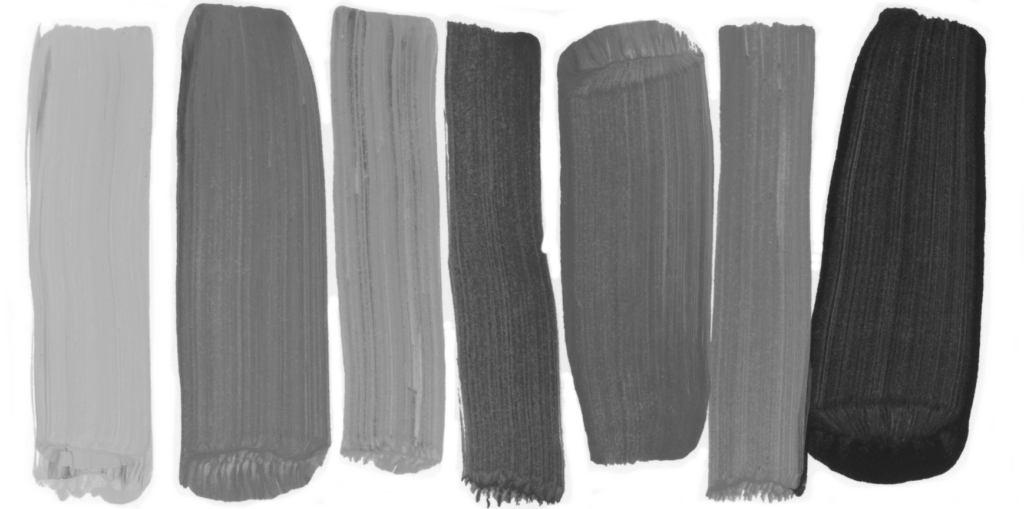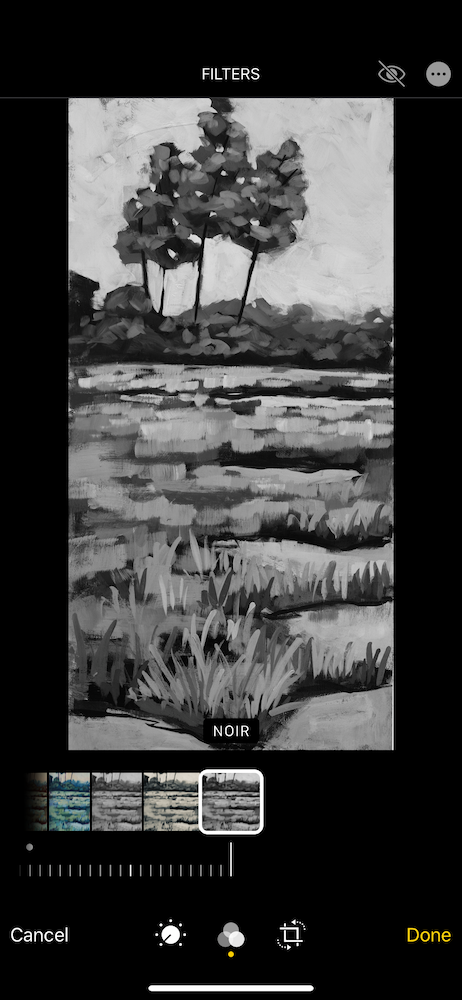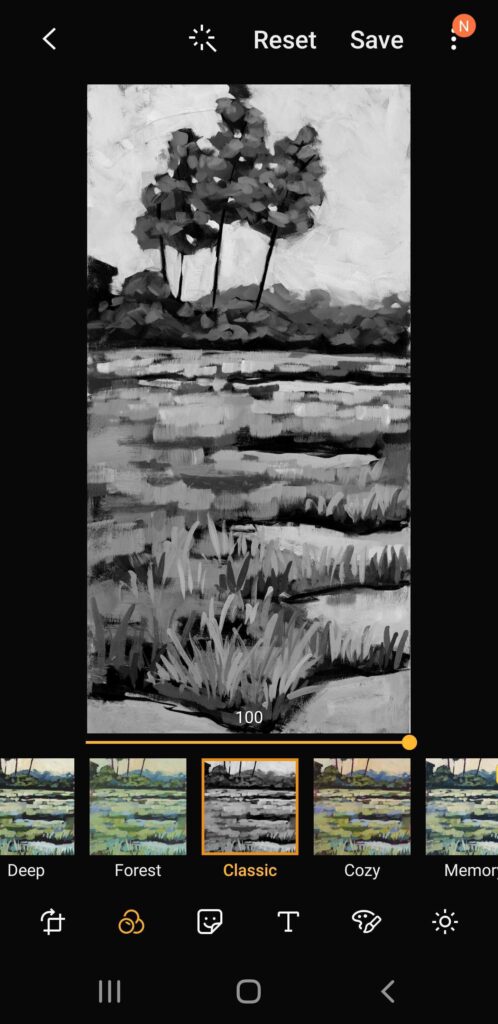Wait, what in the world is value?
In this case, we’re not talking about what a work of art is worth monetarily.
Simply put:
Value is how light or dark a color is. White holds the lightest value, and black is the darkest value. Our eyes see first in light and dark, and see color second.

The secret to creating dynamic, wow-worthy artwork is to focus on the value.
How do you learn to see value?
There are two ways to hack this process: The analog version, and the tech version.
The simple, analog version is to squint. You see, when you squint your eyes, they won’t focus on the colors, instead, the different values of the colors will become more apparent. This is a great technique if you are trying to figure out if two very saturated colors are of a similar value. I use this all the time when mixing colors and while paintings.
But what happens if you are painting outside, or working on a still-life, for example? How do you figure out the color values in a pinch?
This day and age, there’s a simple solution: take a quick photo oh the scene with your smart phone.
Compose the scene like you would want it to look in your painting. Use the editing tools on your phone and select the “black and white” option on it.


Ask yourself if your eye is drawn to the image, and whether it gets stuck in a particular area or if it moves around the composition comfortably.
The image in black and white will help you to see its values without the distraction of color. If it appears to have even shades of grey, then it probably doesn’t have enough contrast or flow.
Following these simple steps will help you determine if there is enough variety of value in your composition. Because if the black and white version doesn’t work, color won’t save it either!
We talk a lot about value and composition in our Painting of the Week Club. Get a new tutorial delivered to your inbox every week! Learn more and sign up for only $15/month.
COMMENTS